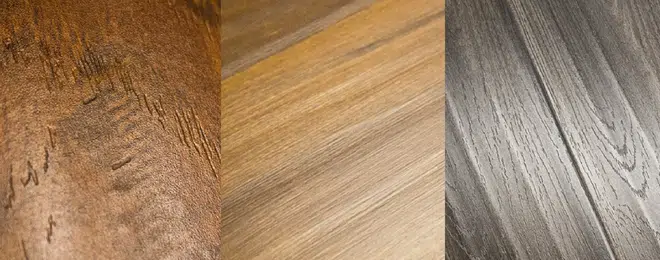The finishing on wood pieces may be surface level, but their impact on look, function and price goes much deeper. Here are the basics of what you need to know when choosing between solid wood, laminate and veneer.
Whether it’s an office, retail space, restaurant, hotel or your very own home, wood furniture is a great option. With the variety of types, stains, and styles of lumber cuts we’ve also outlined on this blog, it’s one of the most versatile materials a custom furniture maker could ever ask for. But wood’s adaptability to every look, function, and budget doesn’t end there – it also depends on whether you choose pieces made of solid wood, laminate, or veneer. To someone new to the world of furniture fabrication, it may even be difficult to tell the difference – but read on to learn the basics of how each type of material and finish can affect your designs.
- Solid Wood: This one is simple, furniture made of solid wood is entirely comprised of… solid wood. This is a popular option for pieces that need to carry an air of authority and elegance. Solid wood furniture can also be stained in any style and is easy to clean and repair whenever needed – and that’s a good thing, because they tend to be heavy and on the bulky side. That said, hardwood furniture will last longer than softwood pieces, and the upfront costs of solid wood materials may be prohibitive to some projects.
- Laminate: Laminate will be the most cost-effective option for buyers on a budget, especially when it comes to pieces that need to endure some wear and tear. Laminate is made from pressed paper or wood with synthetic additives, with a thin finishing layer of wood grain on top. The core of these pieces is made up of fibreboard or particleboard (called substrate). They’re popular as functional, durable, cheaper options, but sometimes, you can tell the wood designs aren’t real, so the finished design may be worth the splurge.
- Veneer: Veneer pieces use a mix of qualities of solid wood and laminate. A substrate is covered in thin layers of solid wood so you get a cheaper price tag as well as a finished look that resembles the real thing. While veneer products can sometimes succumb to water damage in the area between the substrate and the glued wood grain, they are still durable, easy to clean and maintain, and come in a wide variety of colours and types (maybe even more than solid wood pieces).
When you’re thinking about your ideal materials for a custom piece of furniture – there’s no need to go against the grain! There’s a wood approach that will work for every project.

